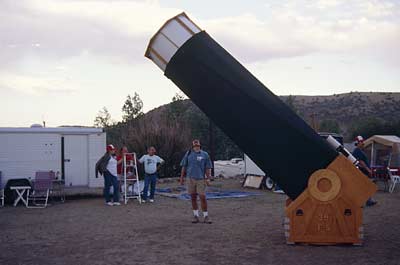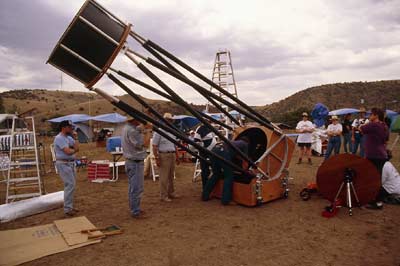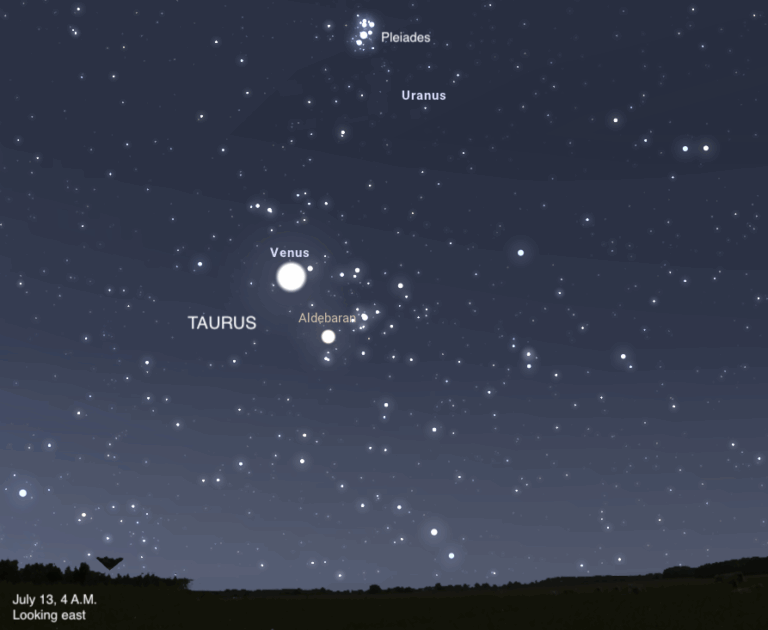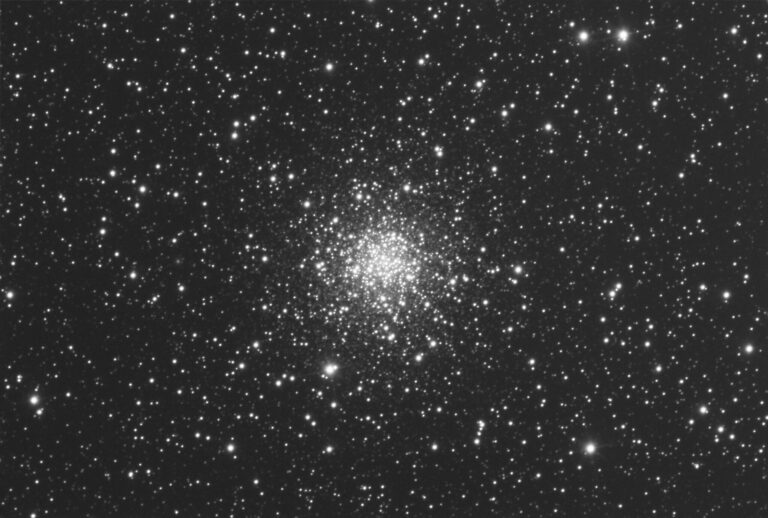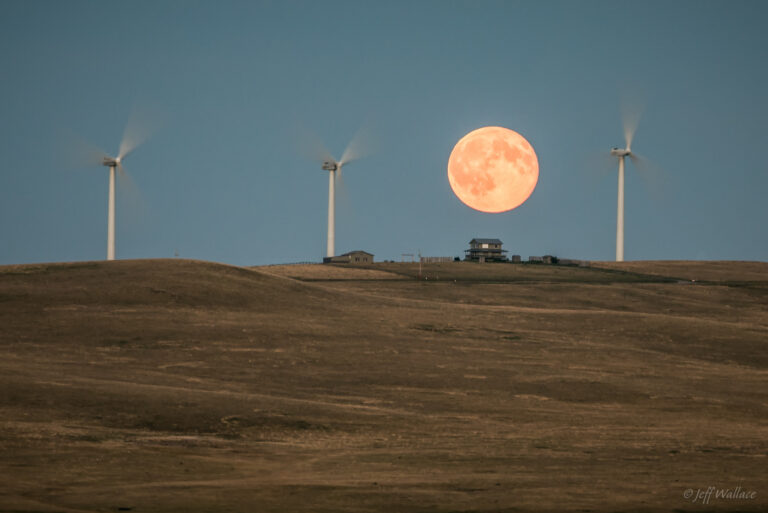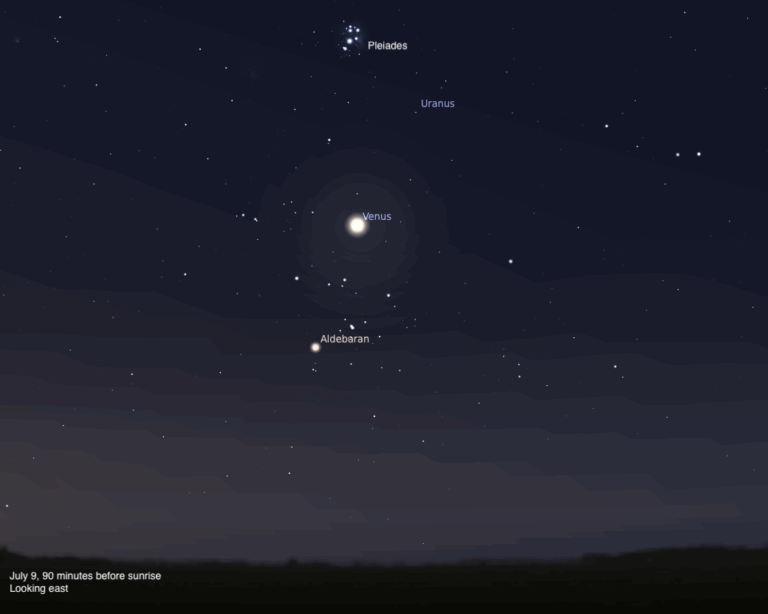Key Takeaways:
Galaxies are a great example of objects that are better viewed through large scopes. You can be the greatest observer on the planet, but if you’re trying to observe galaxies with a 4-inch telescope, your observing log is going to be filled with reports of rough shapes, central condensations, and descriptors like “hinted at” and “small and faint.” There’s no way around it. If you want to observe galaxies — and I mean really get something out of the time you put in at the eyepiece — you’re going to have to use a large telescope.
Large telescopes have several advantages over their smaller counterparts, and “resolution” — how much detail we see in a celestial object — is the first. Resolution depends on two things: the stability of the atmosphere and the aperture of your telescope. You only can control one of these factors. According to an optical law called Dawes Limit, a 4-inch telescope can resolve two double stars with an angular separation of 1.14″. Compare this with the resolution of a 12-inch telescope: 0.38″. Quality telescopes under an excellent sky often surpass the number given by Dawes Limit, but you get the idea. It’s much easier to resolve small storms in Jupiter’s atmosphere, bright knots in distant galaxies, or tiny lunar craterlets through a large telescope than through a small one.
The other major advantage of a large telescope is light-gathering power. This advantage is evident in two practical ways: First, if you compare two telescopes of different sizes, a celestial object will look brighter through the larger one. And, as discussed in the previous paragraph, you’ll also see more detail. Second, you’ll be able to see fainter objects through the larger telescope. When stars (which are point sources) are viewed, the larger scope will have a higher limiting magnitude. The limiting magnitude is the faintest magnitude that can be detected by an instrument. This quantity doesn’t go up as much as light-gathering power, but it’s still important.
Large telescopes can be unwieldy and heavy to transport. Purchase a large scope only after you compare what it weighs to what you can lift and carry easily (whether it be from your house to your yard or from your vehicle to your observing site). A 14-inch Schmidt-Cassegrain telescope is a wonderful instrument, but if you can’t lift it from its storage case to the top of its tripod, it’s useless to you. An observing partner can help in such cases, but then you are dependent on your partner’s availability. New Dobsonian reflectors often are designed as “truss-tube” telescopes. Such a scope’s heaviest components are the mirror and rocker box assemblies. The “tube” is constructed out of lightweight aluminum poles, which are attached to a light secondary mirror assembly.
Because large telescopes generally have thick mirrors, they take longer than smaller telescopes to adjust to ambient temperature. Small whisper fans can speed up the cool-down time, but the best way to cool down a telescope is never to let it warm up in the first place. Of course, this is easier said than done. If you can leave the scope outside so it’s protected from Sun, dust, and rain, you’ll begin your evening observing sessions ahead of the game. This doesn’t mean an observatory is a must (although it’s the best option), but some sort of protective, insulated, reflective cover for your telescope is required.
Some observers consider having to use an observing ladder or stand (to allow you to look through the eyepiece of a large telescope) a disadvantage. I know many observers who chose the size of their telescope based on whether or not they could stand on the ground and view an object at the zenith. Personally, if a 24-inch telescope is available, I don’t mind climbing a few steps to look through it.
The proliferation of large telescopes is due to one thing: Most large reflecting telescopes now are placed on a type of mount called a Dobsonian mount, named for renowned telescope maker John Dobson. The alt-azimuth mount he invented has revolutionized amateur astronomy. It is a simple dual-pivot mount almost always combined with a Newtonian telescope optical tube assembly. Just push the telescope up or down to change altitude and push it left or right to change azimuth. It is a terrific design and easy to use.
Some Dobsonian mounts have been upgraded with digital setting circles (DSCs), available from many astronomy vendors. All commercial DSCs work on alt-azimuth telescopes such as Dobsonians as well as on equatorially mounted scopes. DSCs employ an electronic rotary encoder, which is placed on each axis of the mount. The two encoders provide numeric displays (or electronic signals if connected to a computer). Small processors may be added to perform the transformation from the altitude and azimuth of the mount to the right ascension and declination of the sky.
DSCs appeal to many observers who like to understand the concepts of astronomical coordinate systems but have the processor do the actual pointing. To set up DSCs, you first must center either two or three bright stars (depending on the system) in the field of view. Then, after you enter an object’s designation (for example M11 or NGC 3242), you simply move your telescope until the readouts for right ascension and declination are at zero.
A recent development in Dobsonian mounts is the driven version. With a motor attached to both the altitude and azimuth axes of the mount, the telescope either can (1) track an object across the sky once the object is placed in the field of view, or (2) interface to a computer to both find and track an object. This type of drive is known as a go-to drive. Quality mounts employing either system are very accurate. Once an object is found, an observer can follow it without continually moving the telescope.
Many amateur astronomers I have observed with believe a person’s first telescope should not have a go-to drive, and this opinion has nothing to do with cost. The contention is that all amateur astronomers should learn the sky, and star-hopping is part of that basic education.
On the other hand, most celestial objects are faint, and locating them can be very difficult, especially for someone just starting out. Failure to learn how to find “things in the sky” is a common reason people quit the hobby. Because of this, I favor go-to mounts, and not just for beginners.
Long-time observers who know the sky can and do benefit from go-to mounts. I cannot tell you how many times I have heard an experienced amateur astronomer say, “Since I got my go-to drive, I spend much more time observing!” And, really, isn’t that what it’s all about?
But there’s another reason a go-to (or at least a driven equatorial) mount will be valuable to the owner of a large telescope. Large scopes can handle higher magnifications more easily. It’s a simple fact based on the aperture of the mirror. For some amateur astronomers, the ability to magnify to a greater extent is as important a reason to purchase a large scope as is simple light-gathering power. But at higher magnifications, Earth’s rotation moves the object being viewed out of the field of view quickly. If you were using a smaller scope at a lower magnification, you’d just grab either the tube or the top of the drive (depending on the telescope) and nudge the scope a bit to re-center the object. A large telescope is proportionately harder to move, however, and if your hand isn’t extremely steady, you’ll spend more time trying to relocate the object you’ve been observing than actually looking at it. So if you invest in a large telescope, complete the package with a go-to mount.

